#ed kaufman poet
Explore tagged Tumblr posts
Text
Pulitzer Prize Winning Books
Fiction
WINNER
Night Watch, by Jayne Anne Phillips (Knopf)
A beautifully rendered novel set in West Virginia’s Trans-Allegheny Lunatic Asylum in the aftermath of the Civil War where a severely wounded Union veteran, a 12-year-old girl and her mother, long abused by a Confederate soldier, struggle to heal.
Finalists
Same Bed Different Dreams, by Ed Park (Random House)
Wednesday’s Child, by Yiyun Li (Farrar, Straus and Giroux)
History
WINNER
No Right to an Honest Living: The Struggles of Boston’s Black Workers in the Civil War Era, by Jacqueline Jones (Basic Books)
A breathtakingly original reconstruction of free Black life in Boston that profoundly reshapes our understanding of the city’s abolitionist legacy and the challenging reality for its Black residents.
Finalists
American Anarchy: The Epic Struggle between Immigrant Radicals and the US Government at the Dawn of the Twentieth Century, by Michael Willrich (Basic Books)
Continental Reckoning: The American West in the Age of Expansion, by Elliott West (University of Nebraska Press)
Biography
WINNERS
King: A Life, by Jonathan Eig (Farrar, Straus and Giroux)
A revelatory portrait of Martin Luther King, Jr. that draws on new sources to enrich our understanding of each stage of the civil rights leader’s life, exploring his strengths and weaknesses, including the self-questioning and depression that accompanied his determination.
Master Slave Husband Wife: An Epic Journey from Slavery to Freedom, by Ilyon Woo (Simon & Schuster)
A rich narrative of the Crafts, an enslaved couple who escaped from Georgia in 1848, with light-skinned Ellen disguised as a disabled white gentleman and William as her manservant, exploiting assumptions about race, class and disability to hide in public on their journey to the North, where they became famous abolitionists while evading bounty hunters.
Finalist
Larry McMurtry: A Life, by Tracy Daugherty (St. Martin’s Press)
Memoir or Autobiography
WINNER
Liliana’s Invincible Summer: A Sister’s Search for Justice, by Cristina Rivera Garza (Hogarth)
A genre-bending account of the author’s 20-year-old sister, murdered by a former boyfriend, that mixes memoir, feminist investigative journalism and poetic biography stitched together with a determination born of loss.
Finalists
The Best Minds: A Story of Friendship, Madness, and the Tragedy of Good Intentions, by Jonathan Rosen (Penguin Press)
The Country of the Blind: A Memoir at the End of Sight, by Andrew Leland (Penguin Press)
Poetry
WINNER
Tripas: Poems, by Brandon Som (Georgia Review Books)
A collection that deeply engages with the complexities of the poet’s dual Mexican and Chinese heritage, highlighting the dignity of his family’s working lives, creating community rather than conflict.
Finalists
Information Desk: An Epic, by Robyn Schiff (Penguin Books)
To 2040, by Jorie Graham (Copper Canyon Press)
General Nonfiction
WINNER
A Day in the Life of Abed Salama: Anatomy of a Jerusalem Tragedy, by Nathan Thrall (Metropolitan Books)
A finely reported and intimate account of life under Israeli occupation of the West Bank, told through a portrait of a Palestinian father whose five-year-old son dies in a fiery school bus crash when Israeli and Palestinian rescue teams are delayed by security regulations.
Finalists
Cobalt Red: How the Blood of the Congo Powers Our Lives, by Siddharth Kara (St. Martin’s Press)
Fire Weather: A True Story from a Hotter World, by John Vaillant (Knopf)
Drama
Primary Trust, by Eboni Booth
A simple and elegantly crafted story of an emotionally damaged man who finds a new job, new friends and a new sense of worth, illustrating how small acts of kindness can change a person’s life and enrich an entire community.
Here There Are Blueberries, by Moisés Kaufman and Amanda Gronich
Public Obscenities, by Shayok Misha Chowdhury
Link to list here
0 notes
Text
My Physical TBR (under the cut)
because @bookdragon1811 enabled me :)
Currently Reading:
The ‘One Thing’ is Three by Michael E Gaitley; The Power of Silence by Robert Cardinal Sarah; Daughter of Redwinter by Ed McDonald; Tomorrow and Tomorrow and Tomorrow by Gabrielle Zevin
Middle-Grade
- Peter Nimble and His Fantastic Eyes by Jonathan Auxier
- White Cat by Holly Black
- The Iron Trial by Holly Black and Cassandra Clare
- The School for Good and Evil (and books 2 and 3) by Soman Chainani
- The City of Ember by Jeanne DuPrau
- The Inquisitor’s Tale by Adam Gidwitz
- Howl’s Moving Castle by Diana Wynn Jones
- KOTLC: Exile by Shannon Messenger
- KOTLC: Everblaze by Shannon Messenger
- KOTLC: Neverseen by Shannon Messenger
- The Water and the Wild by KE Ormsbee
- The Thing About Leftovers by CC Payne
- The Blackthorn Key by Kevin Sands
- Splendors and Glooms by Laura Amy Schlitz
- The Mysterious Benedict Society by Trenton Lee Stewart
- Nevermoor: The Trials of Morrigan Crow by Jessica Townsend
Young Adult
- The Poet X by Elizabeth Acevedo
- Children of Blood and Bone (and Children of Virtue as Vengeance) by Tomi Adeyemi
- The Passion of Dolssa by Julie Berry
- Frostblood by Elly Blake (and Fireblood and Nightblood)
- The Atlas Six by Olivie Blake
- When Wishes Bleed by Casey L Bond
- Sky Without Stars by Jessica Brody and Joanne Rendell
- A Song of Wraiths and Ruin by Roseanne A Brown
- Graceling (and Fire) by Kristin Cashore
- A Study in Charlotte by Brittany Cavallaro
- The Last Namsara by Kristen Ciccarelli
- House of Dragons by Jessica Cluess
- A Winter’s Promise by Christelle Davis
- Ruthless Gods by Emily A Duncan
- Blessed Monsters by Emily A Duncan
- Wolf by Wolf (and Blood for Blood) by Ryan Graudin
- River Secrets by Shannon Hale
- The Ten Thousand Doors of January by Alice E Harrow
- Descendant of the Crane by Joan He
- Sea Witch by Sarah Hennings
- A Thousand Nights by EK Johnston
- These Broken Stars by Amie Kaufman and Megan Spooner
- The Shadows Between Us by Tricia Levenseller
- The Devouring Gray by Christine Lynn Herman
- Spin the Dawn by Elizabeth Lim
- Six Crimson Cranes by Elizabeth Lim
- Warcross (and Wildcard) by Marie Lu
- A Very Large Expanse of Sea by Tahereh Mafi
- People Like Us by Dana Mele
- Splinters of Scarlet by Emily Bain Murphy
- Holding Up the Universe by Jennifer Niven
- Radio Silence by Alice Oseman
- The Beauty of Darkness by Mary E. Pearson
- Bone Crier’s Moon by Kathryn Purdie
- Falling Kingdoms by Morgan Rhodes
- Sorcery of Thorns by Margaret Rogerson
- The Steelheart Trilogy by Brandon Sanderson
- Scythe by Neil Schusterman
- Ink in the Blood by Kim Smejkal
- Ever the Hunted by Erin Summerill
- The Amulet of Samarkand by Jonathan Stroud
- An Ember in the Ashes (and A Torch Against the Night) by Sabaa Tahir
- Strange the Dreamer (and Muse of Nightmares) by Laini Taylor
- The Tiger at Midnight by Swati Teerdhala
- The Hate U Give by Angie Thomas
- Everything, Everything by Nicola Yoon
- Fable by Adrienne Young
Adult
- The Stardust Thief by Chelsea Abdullah
- Ninth House by Leigh Bardugo
- The City of Brass by SA Chakraborty
- A Touch of Darkness by Scarlett st Clair
- All the Light We Cannot See by Anthony Doerr
- The Wedding Date by Jasmine Guillory
- the curious incident of the dog in the night-time by Mark Haddon
- The Midnight Library by Matt Haig
- The Fifth Season by NK Jemisin
- The Calculating Stars by Marie Robinette Kowal
- The Poppy War by RF Kuang
- The Lies of Locke Lamora by Scott Lynch
- The Last Magician by Lisa Maxwell
- Daughter of Redwinter by Ed McDonald
- The Starless Sea by Erin Morgenstern
- The Night Circus by Erin Morgenstern
- Where the Crawdads Sing by Delia Owens
- The Name of the Wind by Patrick Rothfuss (and A Wise Man’s Fear)
- Ariadne by Jennifer Saint
- The Mistborn Trilogy by Brandon Sanderson
- Warbreaker by Brandon Sanderson
- The Way of Kings by Brandon Sanderson
- Vicious by VE Schwab
- A Darker Shade of Magic by VE Schwab
- The Near Witch by VE Schwab
- Salt to the Sea by Ruta Sepetys
- The Hating Game by Sally Thorne
- The Siren Queen by Nghi Vo
- The Golem and the Jinni by Helene Wecker
- The Way of Shadows by Brent Weeks
- Shadow’s Edge by Brent Weeks
- The Dictionary of Lost Words by Pip Williams
- The Bird King by G Willow Wilson
- Tomorrow, and Tomorrow, and Tomorrow by Gabrielle Zevin
- Four Treasures of the Sky by Jenny Tinghui Zhang
Classics
- Emma by Jane Austen
- Persuasion by Jane Austen
- Sense and Sensibility by Jane Austen
- Peter Pan by JM Barrie
- Jane Eyre by Charlotte Brontë
- Whuthering Heights by Emily Brontë
- And Then There Were None by Agatha Christie
- Elephants Can Remember by Agatha Christie
- Murder on the Orient Express by Agatha Christie
- Crime and Punishment by Dostoyevsky
- The Count of Monte Christo by Alexandre Dumas
- The Odyssey by Homer (i’ve read parts but haven’t read it through in full)
- Les Mis by Victor Hugo (yes i do have a death wish)
- The Hunchback of Notre Dame by Victor Hugo
- The Last Day of a Condemned Man by Victor Hugo
- A Minstrel in France by Harry Lauder
- The Phantom of the Opera by Gaston Leroux
- The Space Trilogy by CS Lewis
- The Call of the Cthulhu and Other Weird Stories by HP Lovecraft
- Dracula by Bram Stoker
- Anna Karenina by Leo Tolstoy
- Death of Ivan Hych by Leo Tolstoy
- War and Peace by Leo Tolstoy
- The Picture of Dorian Gray by Oscar Wilde
- The Aeneid by Virgil
- The Epic of Gilgamesh
Theology/Church History
- An Exorcist Tells His Story by Gabriele Amorth
- Pope Francis: His Life In His Own Words
- The Little Flowers of St Clare by P. Bargellini
- Church Fathers by Pope Benedict XVI
- Jesus of Nazareth by Pope Benedict XVI
- This Tremendous Lover by M Eugene Boylan
- Orthodoxy by GK Chesterton
- Rome Sweet Home by Scott Hahn
- The First Society by Scott Hahn
- The Holy Bread of Eternal Life by Peter Kwasniewski
- The Secret of Mary by St. Louis de Montfort
- The Secret of the Rosary by St. Louis de Montfort
- A Theology of the Body by Pope John Paul II
- Jesus and the Jewish Roots of the Eucharist by Brant Pitre
- Love & Responsibility by Harol Wojtyla
- How the Catholic Church Built Western Civilization by Thomas Woods
Nonfiction
- Alexander Hamilton by Ron Chernow
- Faith and Treason by Antonia Fraser
- To Kill the Devil by Herbert Malloy, Jr.
- The Queen’s Conjurer by Benjamin Woolley
4 notes
·
View notes
Photo

TRANSMISSIONS
www.twitch.tv/transmissions2020
Our collective isolation highlights that all forms of community are now more important than ever, and it is vital that we find mechanisms to support each other through this precarious time. In this extraordinary landscape that we have found ourselves in, it is clear that many artists, writers and thinkers are having exhibitions, opportunities and subsequent fees cancelled for the foreseeable future. In response to this, we are establishing a new project called TRANSMISSIONS. This is an online platform which will commission artists to share their work within a classic DIY TV show format.
Episode 1
| 23 April | 9PM GMT
REPLAY | 24 April | 9AM GMT
w/ Nathalie Djurberg & Hans Berg / Bruce Bickford / CAConrad / Salvador Dali / Brice Dellsperger / Tessa Hughes-Freeland / Juliet Jacques / Sam Keogh / Jiji Kim / Quinn Latimer / Mark Leckey / Kalup Linzy / Sade Mica / Laure Prouvost / Christopher Soto / Patrick Staff / The Cockettes / TV Party / Unarius Academy of Science / Su Hui- Yu – Curated by Anne Duffau, Hana Noorali & Tai Shani Episode 2 | 30 April | 9PM GMT REPLAY | 1 May | 9AM GMT w/ Sophie Jung Episode 3 | 7 May | 9PM GMT REPLAY | 8 May | 9AM GMT w/ Tarek Lakhrissi – Your world is already ending Episode 4 | 14 May | 9PM GMT REPLAY | 15 May | 9AM GMT w/ Johanna Hedva – Tom Cruise Studies with expert guests Vivian Ia and Matthew Miller Episode 5 | 21 May | 9PM GMT REPLAY | 22 May | 9AM GMT w/ STRAWBERRY JAM: A LITERARY HOUR with Mykki Blanco Episode 6 | 28 May | 9PM GMT REPLAY | 29 May | 9AM GMT w/ CAConrad with invited poets
Season 1 of TRANSMISSIONS will run as six weekly episodes screening every Thursday at 9 pm GMT and repeated on Fridays at 9 am GMT on Twitch. The 1st episode will air on the 23rd of April 2020 which will be curated by Anne Duffau, Tai Shani and Hana Noorali. The subsequent five episodes will be hosted by invited artists. Each artist included in TRANSMISSIONS will be paid a fee in return for their contribution. With a sense of community, all the money used to pay artists in season 1 has been kindly donated by established UK art institutions and commercially stable artists.
Season 1 is funded and supported by, Artquest+DACS, BALTIC Centre for Contemporary Art, Studio Oscar Murillo, Somerset House Studios and Wysing Arts Centre.
Episode 1 | 23 April | 9PM GMT
REPLAY | 24 April | 9AM GMT
w/ Nathalie Djurberg & Hans Berg / Bruce Bickford / CAConrad / Salvador Dali / Brice Dellsperger / Tessa Hughes-Freeland / Juliet Jacques / Sam Keogh / Jiji Kim / Quinn Latimer / Mark Leckey / Kalup Linzy / Sade Mica / Laure Prouvost / Christopher Soto / Patrick Staff / The Cockettes / TV Party / Unarius Academy of Science / Su Hui- Yu – Curated by Anne Duffau, Hana Noorali & Tai Shani
Episode 2 | 30 April | 9PM GMT REPLAY | 1 May | 9AM GMT w/ Sophie Jung
Sophie Jung, The Bigger Sleep, 2019 courtesy the artist and Kunstmuseum Basel. Photo: Julian Salinas
Working across text, sculpture and performance, Sophie Jung’s work navigates the politics of re/er/re/presentation and challenges the reductive desire to conclude. Her texts unfocus on blurring scripted hegemonies and tap, hop, stammer and stumble over and across languaged powers. She employs humour, shame, the absurd, raw anger, rhythm and rhyme, slapstick, hardship, friendship and a constant stream of slippages. Her sculptural work consists of bodies made up of both found and haphazardly produced attributes and defines itself against the dogma of an Original Idea or a Universal Significance. Instead it stands as a network of abiding incompletion, an ever-changing choir of urgencies and pleasures, traumas and manifestations that communally relay between dominant and minor themes. Sophie Jung is invested in triggering a de-categorising of concepts and a deconceptualisation of categories and understands her approach to “stuff” – both legible utensil and metaphoric apparition – as an uncertain queering slash querying of historical materialism. Sophie Jung (lives and works in Basel and London) received a BFA from the Rietveld Academy, Amsterdam, and a MFA from Goldsmiths, London. Recent projects and exhibitions include Sincerity Condition at Casino Luxembourg, Woman Standing at The National Gallery, Prague, Taxpayer’s Money for Frieze LIVE; Dramatis Personaea at JOAN, Los Angeles; The Bigger Sleep at Kunstmuseum Basel | Gegenwart and Block Universe, London; Come Fresh Hell or Fresh High Water at Blain Southern, London; Producing My Credentials at Kunstraum London and Paramount VS Tantamount at Kunsthalle Basel. She is currently working on solo exhibitions at E.A. Shared Space, Istituto Svizzero in Milan and Galerie Joseph Tang in Paris and works as a guest mentor at Institut Kunst, Basel.
Episode 3
| 7 May | 9PM GMT
REPLAY | 8 May | 9AM GMT
w/ Tarek Lakhrissi
– Your world is already ending
Tarek Lakhrissi is a visual artist and a poet based in Paris. His works have been exhibited in Auto Italia South East (London, UK), Hayward Gallery (London, UK), Museum of Contemporary Art (Sydney, AU), Palais de Tokyo (Paris, France), Grand Palais - FIAC (Paris, FR), Lafayette Anticipations (Paris, FR), CRAC Alsace (Altkirch, FR), Artexte (Montreal, CA), Šiuolaikinio meno centras/CAC (Vilnius, LT), Espace Arlaud (Lausanne, CH), among others. He is a featured artist in the 22nd Biennale of Sydney NIRIN (2020).
Episode 4 | 14 May | 9PM GMT REPLAY | 15 May | 9AM GMT w/ Johanna Hedva – Tom Cruise Studies with expert guests Vivian Ia and Matthew Miller
Tom Cruise Studies is a meander of curiosity. There is no driving inquiry other than the question, "What's, like, up with Tom Cruise?" Hedva considers the various roles Cruise has played onscreen and in public, from religious zealot, to cocky upstart, to a man oppressed by his own masculinity, to couch-jumping love-nut, to an exiled actor who clawed his way back into Hollywood via a maniacal obsession with doing death-certain stunts. Joined by two expert guests, Hedva and Vivian Ia will consider the astrology charts of Cruise and L. Ron Hubbard, while Matthew Miller will share his theory that the Mission Impossible franchise is Cruise's vehicle for making public apologies to his ex-wife, Katie Holmes.
Johanna Hedva is a Korean-American writer, artist, musician, and astrologer, who was raised in Los Angeles by a family of witches, and now lives in LA and Berlin. Hedva is the author of the novel, On Hell. Their collection of poems, performances, and essays, Minerva the Miscarriage of the Brain, will be published in September 2020. Their essay, "Sick Woman Theory," published in Mask in 2016, has been translated into six languages, and their writing has appeared in Triple Canopy, frieze, The White Review, and Asian American Literary Review. Their work has been shown at The Institute of Contemporary Arts in London, Performance Space New York, the LA Architecture and Design Museum, and the Museum of Contemporary Art on the Moon, as well as featured in parrhesiades. Their album, The Sun and the Moon, was released in March 2019, and they’re currently touring Black Moon Lilith in Pisces in the 4th House, a doom metal guitar and voice performance influenced by Korean shamanist ritual.
Vivian Ia lives in Berlin. Their poetry is Pushcart-nominated and has appeared or is forthcoming in Bone Bouquet, Tiny Seed, The Gravity of the Thing, Fourteen Hills, and Berkeley Poetry Review.
Matthew Miller is a video director from Sacramento, California. He works in both live-action and animation to create short films and commercial projects. In the last four years, he’s directed a series of short films for The Getty Museum with artists and authors such as Ellsworth Kelly, Yo-Yo Ma, Mary Beard, Mario Vargas Llosa, and Ed Ruscha. He is currently in quarantine with his wife and Snoopy-esque dog, Millie, in Hawaiian Gardens, California, where he has been dividing his time between starting a garden and collecting ideas for a film project.
Episode 5
| 21 May | 9PM GMT
REPLAY | 22 May | 9AM GMT
w/ STRAWBERRY JAM: A LITERARY HOUR with
Mykki Blanco
Join musician Mykki Blanco for an hour of music and poetry readings. Spoken word, lyrical breakdowns, a presentation on two 20th century American literary figures Bob Kaufman & Mina Loy as well as a first time listen to new unreleased musical project.
Episode 6 | 28 May | 9PM GMT REPLAY | 29 May | 9AM GMT w/ CAConrad with invited poets
CAConrad's latest book JUPITER ALIGNMENT: (Soma)tic Poetry Rituals, is forthcoming from Ignota Books in 2020. The author of 9 books of poetry and essays, While Standing in Line for Death (Wave Books), won the 2018 Lambda Book Award. They also received a 2019 Creative Capital grant as well as a Pew Fellowship, the Believer Magazine Book Award, and the Gil Ott Book Award. They regularly teach at Columbia University in New York City, and Sandberg Art Institute in Amsterdam. Please view their books, essays, recordings, and the documentary The Book of Conrad (Delinquent Films) online at http://bit.ly/88CAConrad
"CAConrad's poems invite the reader to become an agent in a joint act of recovery, to step outside of passivity and propriety and to become susceptible to the illogical and the mysterious." ---Tracy K. Smith, New York Times.
Thank you to:
All contributing artists, writers, poets, composers and thinkers; Maxwell Sterling; Adam Sinclair; Lori E. Allen; Artsquest. An artist-run programme that uses research about visual artists’ working conditions to provide support for professional artists; DACS; BALTIC Centre for Contemporary Art; Studio Oscar Murillo; Somerset House Studios; Wysing Arts Centre; Cabinet Gallery; Lisson Gallery & Max Bossier
https://www.twitch.tv/transmissions2020
@transmissions2020
TRANSMISSIONS collective is composed of:
Anne Duffau
is a cultural producer, researcher, and founder of A---Z, an exploratory/nomadic curatorial platform exploring artistic practices and knowledge exchange through collaborations, presentations, soundscapes, screenings and discussions. She has collaborated with a range of projects and organisations including ArtLicks, Southwark Park Galleries, Mimosa House and Danielle Arnaud Gallery, London Please Stand By, or-bits .com, PAF Olomouc Czech Republic & Tenderflix. Anne has previously run the StudioRCA Riverlight, London programme (2016-2018) and is currently the interim curator at Wysing Arts Center, a Tutor at the School of Arts and Humanities, and is the acting Lead in Critical Practice, within the Royal College of Art’s Contemporary Art Practice Programme. She has performed live music under Alpha through a number of projects and collaborations.
Hana Noorali
is an independent curator and writer based in London. In 2019 she was selected (together with Lynton Talbot) to realise an exhibition at The David Roberts Foundation as part of their annual curator’s series. She curated Lisson Presents at Lisson Gallery, London from 2017-2018 and from 2017 -2019, produced and presented the podcast series Lisson ON AIR. In 2018 Hana edited a monograph on the work of artist and Benedictine Monk, Dom Sylvester Houédard. Its release coincided with an exhibition of his work at Lisson Gallery, New York that she co-curated with Matt O’Dell. In 2007, she co-founded a non-profit project space and curatorial collective called RUN active until 2011. In 2020 Hana and her curatorial partner Lynton Talbot will be publishing an anthology that examines the intersection of poetry and film with (p) (prototype).
Tai Shani
is an artist living and working in London. She is the joint 2019 Turner Prize winner together with Lawrence Abu Hamdan, Helen Cammock and Oscar Murillo. In 2019 Tai was a Max Mara prize nominee. Her work has been shown at Turner Contemporary, UK (2019); Grazer Kunst Verein, Austria (2019); Fondazione Sandretto Re Rebaudengo, Italy (2019); Glasgow International, UK (2018); Wysing Arts Centre, UK (2017); Serpentine Galleries, London (2016); Tate, London (2016); Yvonne Lambert Gallery, Berlin (2016) and Irish Museum of Modern Art, Dublin (2016).
2 notes
·
View notes
Photo


#SPDHANDPICKED on UNDERCURRENT - Selected Poems by Eric Walker, ed. Raymond Foyle (Raymond Foyle Books) is the first collection of Eric Walker, a close friend and a peer to many of the important poets of San Francisco and Berkeley in his day: Bob Kaufman, Philip Lamantia, Tisa Walden, Howard Hart, Kirby Doyle, Neeli Cherkovski, Julia Vinograd, and many others.
20% off all month w/ code HANDPICKED
2 notes
·
View notes
Photo









Know Your Jeffs: A Guide To Goldblum’s Characters
This isn’t an exhaustive list, and I will be updating it as I watch more Goldblum movies, adding in the characters as I pick them up! Everything is below the cut so that I can just update as I take more stuff in.
The descriptions of movies and characters are very much not impartial, but they should give you an idea of what you’re in for if you want to look the film up. I’m only including stuff I’ve already seen, plus Raines, which I feel like I’m never gonna be able to get hold of, and am heartbroken about.
Movies are listed in CHRONOLOGICAL order, but if you CTRL+F, you can search for a particular character name, date, or movie/TV title. This is very much under construction. There are currently 40 Jeffs on the list.
1978 - Invasion Of The Bodysnatchers, dir. Philip Kaufman - IMDb

Invasion Of The Bodysnatchers is a film about a kind of alien who comes to Earth and steals people’s bodies - effectively, they make up their own pod-versions of them, and then turn the original to dust.
Jack Bellicec is a poet in New York City, who owns a bathhouse with his wife, Nancy. This film is a sci-fi horror, and Jack is earnest but antsy throughout - he’s a real cutie, and every much a good guy. He’s just the sweetest, and is generally in a state of complete and utter terror, whilst still trying to keep grounded and keep thinking forward.
1980 - The Legend Of Sleepy Hollow, dir. Henning Schellerup, IMDb

Okay, so, for a stupid TV movie from the 80s, this is actually really cute It loosely follows the plot of the short story, but generally with a happier ending and a lot more fun antics from Ichabod Crane, and it’s just great fun. A schoolteacher comes to the valley of Sleepy Hollow, and finds himself facing down the silly ghost stories continuously thrown forward by the locals.
Ichabod Crane is the cutest - he’s soft and sweet with the children, like he is in the short story, on top of being lanky and clumsy and a little stupid; he lacks a lot of his arrogance that he has in the short story, and instead he’s much less of a dick when he criticizes the ghost stories and stuff. He’s lovely, I adore him.
1980 - Tenspeed and Brownshoe, TV Series - IMDb
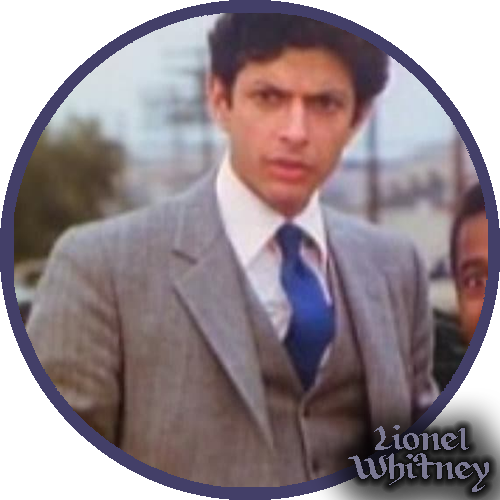
Tenspeed and Brownshoe is a delight - it’s a detective TV series with a very light-hearted tone, and it’s very comfortable to just settle back and watch casually.
Lionel Whitney is... a trip. A chartered accountant turned gumshoe, Lionel starts his own detective agency in L.A. after breaking up with his fiancée and meeting the charming (and duplicitous) E.L. Turner, a conman and scam artist. E.L. is his partner in the business, and the two combine strengths - Lionel with his idolisation of and knowledge of the 40s pulp fictional detective, Mark Savage, as well as his black belt in karate; E.L. with his thousands of accumulated skills, including being a master of disguise, a smooth-talker, and a winner at sleight of hand.
Lionel is a dote: he’s just the sweetest, and he really gives off Bertie Wooster vibes, but with an air of genuine competence Mr Wooster never had. He’s truly incredible, and all the episodes of Tenspeed and Brownshoe are up on YouTube, so it’s really worth watching!
1981 - Threshold, dir. Richard Pearce - IMDb

Okay, so Threshold... Big old snooze fest. Not a very engaging movie, not an especially good movie - I forgot a good deal of the movie after I finished watching it. It was uninspiring and a bit bland. The concept is basically that a pioneer in mechanical science re: bio-engineering comes up with a heart valve to replace a little girl’s heart - the pioneer being Jeff Goldblum’s character - and a doctor puts it in the little girl, but it’s a very unpopular decision, because it’s not organic. Obviously, in the 80s, that was a much bigger deal than it is now.
Aldo Gehring is just... Adorable. Too earnest, a little bit arrogant, and he’s just far too baby-faced for the age he’s textually said to be to be believable, but like... You know! It’s a dull movie either way, and Aldo isn’t a huge part of it.
1983 - The Big Chill, dir. Lawrence Kasdan - IMDb
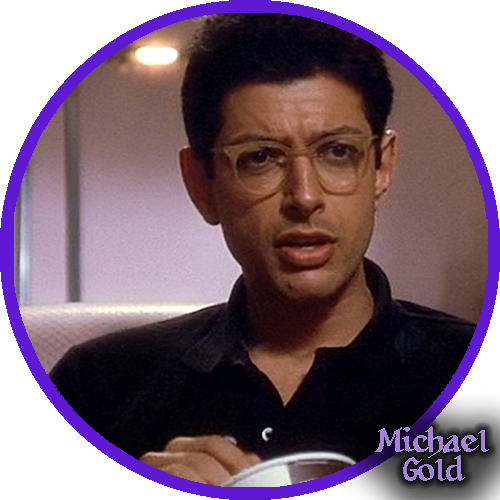
The Big Chill is a film about a group of college friends that meet up for the first time in like, a decade after one of their closest friends commits suicide. They all come for the funeral, and spend a few days together in the aftermath.
A lot of people seem to dislike Michael Gold, but like, he’s kind of one of the most tragic of the figures in the movie - a lot of their friends don’t remember him initially, and he really isn’t good at doing anything other than compartmentalising and shoving down his emotions. He’s brittle and a little sharp, and maybe a bit too honest for his own good, but I really love him, and I totally rec him if you can handle the subject matter, which is obviously very grim and very sad.
1984 - The Adventures of Buckaroo Banzai, dir. W.D. Richter - IMDb

Buckaroo Banzai is a guy who’s basically, like, any eight-year-old’s Mary Sue - he’s a cowboy, a neurosurgeon, an expert test pilot, a rockstar, etc... And they play it completely straight. Leading his band of hypercompetent pretty boys, The Hong-Kong Cavaliers, he saves the world, if not the universe, on the regular.
Doctor Sidney Zweibel, a.k.a. New Jersey, is a new addition to the team in The Adventures, and he’s a neurosurgeon who went to med school with Buckaroo. He’s a would-be cowboy, complete with boots, hat and chaps, and he’s just the cutest thing in the world, a sweet and pure boy. 10/10 Goldblums for Sid Zweibel.
1985 - Silverado, dir. Lawrence Kasdan - IMDb

Mmm, Silverado is one of the worst movies I’ve ever seen, and it has little to no plot. Even for a Western, I found it incredibly dry and disjointed, and I can’t in good fatih recommend it to anybody, even though John Cleese is inexplicably a sheriff midway through.
However. Slick (whose actual name is Calvin Stanhope) is really fucking hot, and so you should watch his scenes on YouTube, even if you don’t watch the movie (which you shouldn’t). Slick’s screentime tocks up to around 15-20 minutes, out of a movie that’s genuinely like, two and a half hours long.
Slick is like, a casino man with a knife in his boot; he wears furs; he’s terrible. He’s so great, I adore him.
1985 - Into The Night, dir. John Landis - IMDb

Into The Night is... a little hard to describe. It’s like, a crime thriller movie with Jeff Goldblum and Michelle Pfeiffer, and with a cameo from David Bowie, as well as about 700 other Hollywood lads who Landis knew. I think the plot is... loose, and the film itself isn’t the greatest, but the main characters are pretty great.
Ed Okin is an astrophysicist dissatisfied with his job and his life in general, who abruptly becomes plagued by this inescapable insomnia, and subsequently becomes embroiled in this whole crime plot across from Pfeiffer. I really love Ed - because of the insomnia, he tends to underreact to most of the situations around him, and he’s very likable.
1985 - Transylvania 6-5000, dir. Ruby de Luca - IMDb
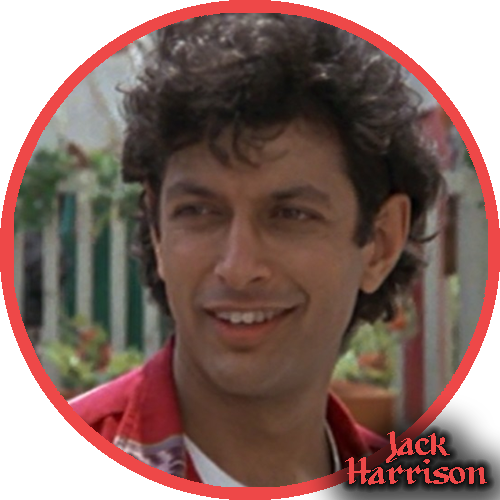
Is TR 6-5000 a good movie? No, absolutely not. But should you watch it? Oh, yes.
This is like, a comedy/absurdist horror/pastiche, lots... It’s lots of stuff. Basically, these two reporters who do a Weekly World News style thing go to Transylvania to report on Frankenstein, and also meet some Igors, a werewolf, a vampire, etc.
Jack Harrison is such a great character - he’s pretty much eternally looking after his hapless partner, Gil, but both of them are as ridiculous as the other, each of them stumbling into bizarre situations. Definitely don’t take the movie too seriously, but it really is a fun thing, and it’s certainly worth watching for the goofy trip it is. Jack is a real sweetheart, and he’s so lovable - Gil certainly thinks so. ;)
1986 - The Fly, dir. David Cronenburg - IMDb

So, fair warning, I nearly vomited like, several times watching The Fly, and was on the verge of just turning it off a few times. It’s nearly forty years old, but the body horror of the effects really stands up, and it’s very gory toward the end. Despite its well-earned rep as such a gory film, though, The Fly is actually a heartbreaking tragedy, so definitely don’t expect it to be lacking in the feels department if you can stomach it.
Seth Brundle (yeah, poor guy, what a name) is a really impressive engineer and scientist, and he invents a machine that should enable him to teleport objects from one electronic pod to another. Unfortunately, when teleporting himself, he becomes melded with an intruder to the pod - a fly - and begins a horrifying transition into something other than human.
Seth at the start is... He’s a genius, but he’s naive, arrogant, and a little too trusting in how earnest he is. As time goes on, and he begins the change into Brundlefly, he becomes much more erratic, and his personality changes a lot. I totally rec Seth, honestly.
1988 - Vibes, dir. Ken Kwapis - IMDB
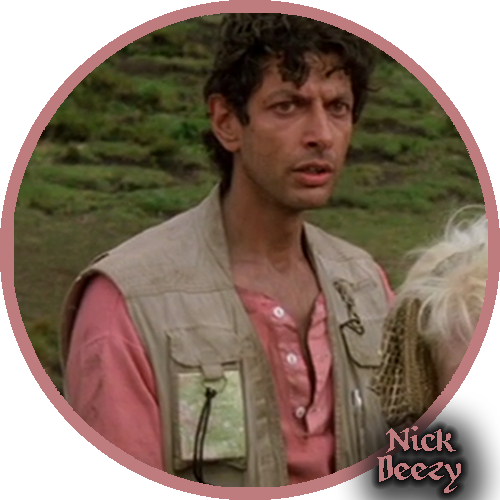
Vibes is a fucking trip. It’s a movie about two psychics - Jeff Goldblum’s character, Nick Deezy, who can tell the history of an object by touching it, and Cyndi Lauper’s character, Sylvia Pickel, who is a medium. Yes, you read that right. Cyndi Lauper. It’s incredible.
Vibes is actually a much better movie than I expected - it’s a genuinely funny comedy, it’s ridiculous and cartoonish and stupid, but it’s fun. Cyndi Lauper and Goldblum have a tango scene at one point, and the height differential is so extreme that she’s literally wrapped around his waist and he’s just carrying her around.
Nick Deezy himself is a really interesting character - he’s kinda used to being used and pushed around because of his psychic powers, but he’s a guy with such a lot of courage and genuine empathy for others, and I just think he’s so sweet.
1988 - Earth Girls Are Easy, dir. Julien Temple - IMDb

So... Earth Girls Are Easy is in the same vein as Vibes for me - it’s a fun romp, and so long as you don’t take it too seriously, it’s a really enjoyable movie. It’s about these three furry aliens that drop down to Earth, and are trying to pick up the language and have a good time. It’s good banter, and it’s also a musical, because-- It was 1988, okay?
Mac is like, probably one of the most genuinely sweet characters out of the ones on this list - he’s very caring, and he’s doing his best to do good whilst not really being able to navigate the world around him very easily. He’s wonderful, and I can’t rec Earth Girls enough.
He’s also a big, furry, blue guy in his underwear for the first part of the movie, if that helps.
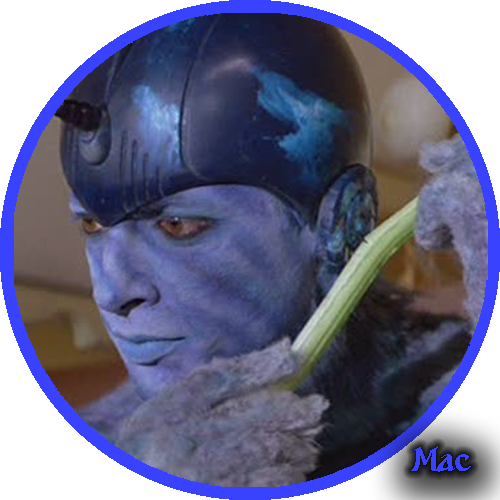
1989 - The Tall Guy, dir. Mel Smith - IMDb

So, disclaimer. This film is written by Richard Curtis, so like... It’s snappy, it’s clever, but it’s also a little insufferable and kinda misogynistic the whole way through, with the classic Curtis obsession with infidelity, where characters cheat on one another whether it makes sense or not.
That aside, I really enjoyed the first two acts of this movie, and while the third one falls very flat, I still think it’s worth watching. Goldblum’s character, Dexter King, plays the straight man in Rowan Atkinson’s comedy sketch act, but goes on to have a romantic relationship with Emma Thompson, and those links are just... So cute.
I think Dexter is kind of a dick, but by no means does that make him unlikable, and I’d still rec The Tall Guy! I’m not sure how long Goldblum was in the UK for - there’s a nude sex scene with Goldblum and Thompson, and I was really thrown, because he’s super pale in this film, compared to similar nude scenes in like, The Fly. So there’s your fun tidbit for the day lmao.
1990 - Mister Frost, dir. Philippe Setbon - IMDb

This film is... Odd. As a thriller, it’s fine - you know, it’s average. It isn’t so terrible, but it’s not great either. But as like, a film, there are aspects where it’s just inexplicably terrible - some of the lines are dubbed over, for some reason, and the sound quality is so off in random moments; there are odd moments where the camera is just too close to the actors’ faces, even for a close-up; technically, this film just has some bizarre and glaring... errors.
The plot is interesting, though, and I did enjoy it for that aspect - Mister Frost is a serial killer institutionalized in an attempt to cure him of his murderous tendencies, and he then professes to be Lucifer himself.
Mister Frost is a funny guy. He’s snide, clever, self-obsessed and sharp - I really liked him, and I totally think he’s worth a watch.
1992 - Fathers & Sons, dir. Paul Mones - IMDb
[icon to be added if I can ever get a decent fucking picture or screencap or something of this film]
This film was bad. I didn’t care for it. Fathers & Sons is, however, like... Very human, I guess. Max, Goldblum’s character, runs a bookstore on the coast and is having trouble communicating with his son, Ed; there’s a lot of tension between them based off the death of Ed’s mother and Max’s own character flaws, as well as Max’s temper. There’s fucking voiceover in the film, which is used clumsily and just comes across as terrible, but there aren’t any glaring technical issues throughout like there are with Mister Frost.
Max himself is not, in my opinion, a very likable character? He’s certainly relatively sympathetic, and you can see where he’s coming from, but he’s got a terrible temper and the tension with Ed is very much his own doing in a lot of respects - despite my personal dislikes, however, Goldblum is as ever a marvel, and you really do feel that Max is a whole, complete person.
1992 - Shooting Elizabeth, dr. Baz Taylor - IMDb

This film was a fucking trip and a half. The premise is that this guy, Howard, really hates his wife, and decides he hates her so much that he’s gonna kill her, but when she goes missing, he is arrested for her murder even though he never got around to it. It’s a generically confused movie which neither really meets its labelled genres of comedy or thriller, but wouldn’t do well under drama or romance either. It’s odd.
Howard Pigeon, as a character, is deeply unstable. A lot of the moments in the movie that I think are meant to be comedic just end up being tragic, because you can see how upset he is, how freaked out he is, and how disconnected from reality and rational thought he is. He’s also just... A really fucking bad person, but to be honest, so is his wife, so like... Hey. It is what it is, I guess.
1992 - Deep Cover, dir. Bill Duke - IMDb

Deep Cover is fucking incredible. It’s easily one of my favourite movies now, and I just die over it, to be honest. Playing across from Laurence Fishburne (then billed as Larry), David Jason (Elias in the script, and I don’t know why they changed it, maybe to make his name less blatantly Jewish, but I assume none of them had ever heard of Only Fools and Horses) is a low-down cocaine mogul trying to break out on his own from the local boss.
He’s a fascinating character, and I just adore him - the film itself is a very gritty noir that really considers lines of racial intersection and prejudice within both the police force and the drug trade, and David himself is constantly suffering from antisemitism and a lot of very targeted homophobic remarks, and it’s heavily implied he wants to fuck John, Laurence Fishburne’s character. David is erratic, sharp, and extremely brittle with a very short temper: he and John kinda balance each other out, because John’s a much cooler, calmer guy, and I just love their dynamic.
David’s my son. I love him. I will cry over him forever.
1993 - Jurassic Park, dir. Steven Spielberg - IMDB ↪1997 - Jurassic Park: The Lost World, dir. Steven Spielberg - IMDb ↪2018 - Jurassic World: Fallen Kingdom, dir. J.A. Bayona - IMDb
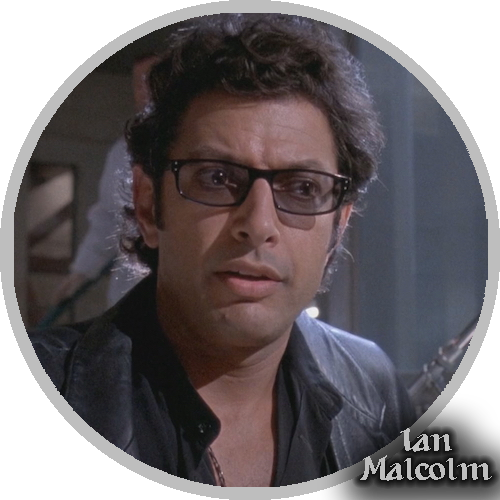
So, like, I’m sure you know the basic concept of Jurassic Park. A crazed Walt Disney parody in white linen with seemingly unlimited money decides to clone a bunch of fucking dinosaurs and put them into a theme park, and it goes horribly wrong. These films are genuinely great sci-fi, raising some wonderful philosophical questions about ownership, ethics, and our place in the universe, and the voice of that philosophy usually belongs to Doctor Ian Malcolm, a mathematician who specialises in chaos theory.
Ian Malcolm... I just adore him, I really do. You know, I’ve read the book of course, as well as the seen all the Jurassic Park and Jurassic World movies, and Ian is just a delight - he’s bright, he’s sarcastic, but he’s genuinely full of feeling and so eager to talk to other people, to connect with them, etc. I just find him fascinating, and even if sci-fi isn’t your thing, you’ll love Jurassic Park for him alone.
He reprises his role in the latest Jurassic World movie - I can’t, in all good conscience, really recommend the Jurassic World movies, but... He is a silver fox.

1995 - Hideaway, dir. Brett Leonard - IMDb
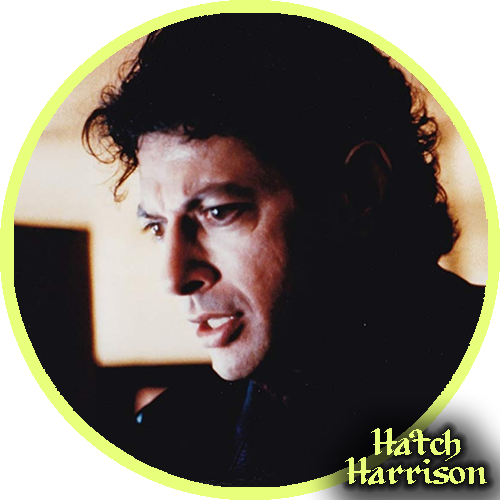
Hideaway is a supernatural thriller based around the concept of demonic possession, and an antiques dealer - Hatch Harrison - finds he has visions of a local serial killer after being revived from being dead for several minutes. Using those visions to thwart the killer, he and his family realise the cause is supernatural.
Hatch is a really cool dude, and I like him a lot - he’s got the strongest dad energies, and he’s so, so caring. Even grieving and tense, like, he’s just doing his best, and he’s such a good guy, I really adore him.
1995 - Nine Months, dir. Chris Columbus - IMDb

Nine Months is a terrible movie thick with a deeply unsettling ideology re: the whole “everybody really wants kids and must have them”, and I honestly despised it throughout. It’s just a terrible movie, and Columbus always ranges from “this guy is a vaguely bad director” to “this guy is a fucking twat”, and there is nothing vague about the badness of this movie.
That aside, however, Goldblum’s character is kind of a delight. Sean Fletcher is a painter (of paintings, not houses) and like... Layabout? He’s a little erratic, he changes his mind about stuff constantly, but he’s a really sound guy, and he cares a lot about Hugh Grant’s character, who is the protagonist. He’s really fun in a movie that’s just garbage the way through.
1995 - Powder, dir. Victor Salva - IMDb

Powder is a very sad movie, to be honest. It’s about this lad who’s like, an albino with telekinetic powers, and when his parents die, he ends up having to go into the public school system, where he’s bullied an awful lot. It’s extremely brutal about a lot of the bullying stuff, and it does come across very accurately; just as a general warning, there’s... an uncomfortable tone to it, although nothing directly or graphically terrible, especially re: sexuality, which I noticed even before looked Salva up and realised he was that paedophile that did Jeepers Creepers. It’s just something to be aware of.
Jeff’s character is... a delight, however. Donald Ripley is a high school teacher who’s genuinely really passionate about teaching, has no small amount of sympathy for all of his students, and is just-- He’s really sweet, and I love him. Despite the uncomfortable gaze of the film, he retains a paternal air, and I love it.
1996 - Independence Day, dir. Roland Emmerich - IMDb ↪2016 - Independence Day: Resurgence, dir. Roland Emmerich - IMDb

Independence Day, honestly, I expected to be like, bad sci-fi dreck, and it genuinely isn’t. While I think the premise is inherently stupid (the whole evil aliens invade thing), it’s actually executed so well, and I just love it as a flick - Judaism saves the day in many aspects, and it’s so nice to have that positive thing mixed up in it.
David Levinson is such a sweet guy - he’s arrogant and a little bit of an ass, but like, he’s so caring: he constantly worries about his dad, he’s so loyal to his ex-wife without being creepy or weird about it after like, three years; he fucking recycles and uses his bike to get around the city... Like, he’s an underachiever initially, but he’s a genuinely nice guy despite his abrasive personality at times, you know?
I just love him.
And he reprises the role in the new movie, which isn’t as good as the first one, but is still worth a watch for Julius Levinson’s antics, picking up grandchildren as he drives across America.

1998 - Holy Man, dir. Stephen Herek - IMDb

My full review of Holy Man is here.
Holy Man is not a good film. It’s about an exec who runs a TV shopping channel, but is like, really shit at it, and he ends up getting G., a homeless guru played by Eddie Murphy, to sell stuff for him. Nonsensical and odd although the film is, it’s actually surprisingly sweet and wholesome, and I really enjoyed a lot of the humour.
Ricky is a pretty bad guy at the beginning, but he’s slick and fun and good-humoured - he’s mostly just selfish more than outright evil, and he actually ends up becoming a lot less selfish toward the end of the film. He’s a sweetheart, in some respects.
2001 - Cats & Dogs, dir. Lawrence Guterman - IMDb

God, this movie is so bad, and so much more racist than I remembered? There’s this whole racist sequence with some ninja cats, complete with the chopsticks-style music playing in the background, and that’s... Awful.
But Charles Brody is actually really funny, to be honest. Goldblum somehow makes him feel really human - earnest and work-obsessed, but still desperate to be a good father despite not being naturally inclined, and that’s... Honestly, I hate it when he does this. He takes the stupidest character in the stupidest movie and makes them feel like a real person, and I hate him for it.
Brody is cute.
2002 - Igby Goes Down, dir. Burr Steers - IMDb

Igby Goes Down is... Hm. What best to call it? Insipid teenage horseshit. The whole film is just fucking terrible, honestly - it centres around the Culkin that isn’t Kevin in Home Alone, and he’s some unbearable little New York teenager who thinks the world revolves around him and is upset at the prospect that perhaps he should go to school and/or get a job.
Anyway, Goldblum is at his least moral and most hot, he is revolting, and he is so sexy. There’s a weird thing where he’s the family friend of a family that’s pretty anti-semitic, but they play it straight, as if Jeff Goldblum’s face isn’t one of the most Jewish faces anybody’s ever seen, but that aside, he’s really sexy. Sociopathic, abruptly violent, and infrequently undressed, but it’s not worth watching the rest of the film for, to be honest.
2003 - Spinning Boris, dir. Roger Spottiswoode - IMDb

Spinning Boris. What a film.
Here, listen, we just watched this, me and @annethecatdetective, and it was absolutely nothing that I expected,or could expect. It’s a heavily fictionalised “based on a true story” film about three Rpublicans who went to work on the Boris Yeltsin campaign in ‘96. We, apparently, are once again meant to believe Jeff Goldblum as a goyische Republican, which--
I mean, what can I tell you? He does it so well. George Gorton’s fictionalised counterpart is charismatic, charming and funny, but so is most of the movie - the Republican trio are all morons, but that actually lends to their likability in the end, and Gorton is the most lovable of the three, taking the foreground. This movie was like, actually really good.
2004 - The Life Aquatic With Steve Zissou, dir. Wes Anderson - IMDb

I hated this film, and had to fast-forward a lot of it. I’m not a fan of Anderson at all, much as Goldblum is always singing his praises - I just don’t get it, I guess. Anderson is a master of visual spectacle, but he’s one of the worst writers out there, and pithy lines don’t make up for the complete lack of character that any of his films have.
Alistair Hennessy is no exception. He’s pithy, vaguely (comedically?) sociopathic, and is kinda DTF... And that’s about it. Even Goldblum can’t really add that much depth to this guy, because there’s no depth in other characters for him to play off.
2006 - Man of the Year, dir. Barry Levinson - IMDb

Mmm, so, Man of the Year surprised me.
It’s definitely quite weak, when it comes to plot and writing - the jokes aren’t at their strongest; it can’t really decide whether it wants to be a comedy or a political thriller; some of the jokes and commentary are very off-colour and have not aged well; it seeks to set out a political moral without making any particular targets. Nonetheless, I rather enjoyed it - it doesn’t pretend to be a higher art than it is, and I think it’s still enjoyable. The primary drawback is probably that the premise of a comedian being elected president of the USA is much less hilariously unbelievable in the wake of the Trump campaign, and that colours my perception a little - some of the protag’s comments about immigration or women, the way he responds to other candidates in debate, Hell, even Robin Williams’ wearing of a red baseball cap at one point... All of those elements kinda take the humour out of it a bit because of the Trump election, but hey, it was 2006 - how could they possibly know?
Goldblum’s character in this, Mr Stewart, is the lawyer and primed attack dog of a corrupt company that produces the electronic voting machines responsible for Williams’ character being elected. He isn’t at his most Goldblum-esque in this, I have to say - he’s sharp, nasty, and very business-focused, but he doesn’t get that much time on screen, and his on-screen moments don’t lean very much into his usual charm and humour. Stewart is actually a very dull, run-of-the-mill evil corporate type, and he was a pretty boring character.
2007 - Raines, TV Series - IMDb

I will write whatever you want if you can get me a download link for this, or somewhere where I can just buy the fucking series, from Ireland. I am desperate to watch it, because it looks fucking awful. Michael Raines is a detective who hallucinates that his victims help him solve the crimes.
Doesn’t that sound so bad? I need it.
2009-2010 - Law & Order: Criminal Intent, TV Series - IMDb
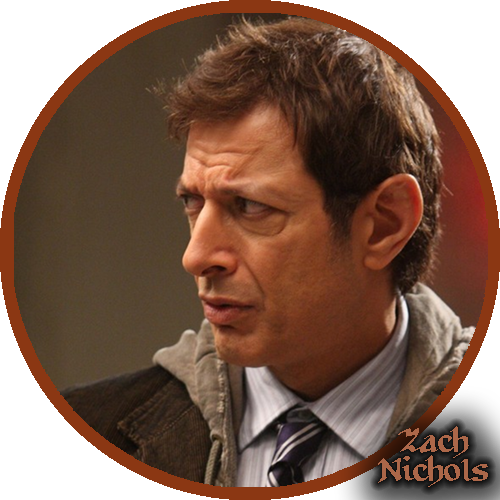
So like, you know the shtick with Law & Order. It’s a gory, stupid crime procedural that’s just really stupid. This one, Criminal Intent, is about major crimes, but honestly, I have little to no idea exactly what a major crime is, even having watched the two seasons in which Zach Nichols is a marauding force.
Zach Nichols himself is... Fascinating. So, you know how there’s this fucking trend of just, mean detective who everyone lets be mean because he’s a ~genius~ or whatever, and everyone is always like “ugh, he fucking sucks, but we gotta let him do that”? That is not the case with Zach Nichols. Zach Nichols is nothing short of a genuine sociopath, continuously manipulative, randomly and without provocation is he cruel to victims, witnesses and criminals alike. At no point does anybody call him out for being terrible, or even admitting he’s being terrible. It’s like no one registers the cruelty of his behaviour, or cares.
Honestly, I expect it’s quite accurate as to the New York police system, and in the mean time, it’s really fucking hot. He’s my favourite of all of Goldblum’s characters, and he disgusts me on literally every level.
2010 - Morning Glory, dir. Roger Michell - IMDb
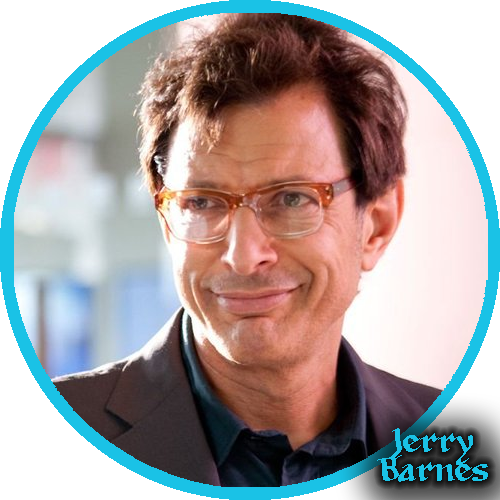
Morning Glory is... It starts out very bland and uninspiring, but it does grow on you more as it goes on. In my opinion, it would have been better if they’d just tried to bill it genuinely, as a comedy-drama, which is what it is - instead, they tried to shoehorn in a very ugly actor I forget the name of as a love interest for Rachel McAdams, I presume in desperate hope of earning that rom-com dollar. Nonetheless, it’s a cute enough concept - TV journalist gets her dream job running a news studio, and has to get bully and asshole anchor Harrison Ford to be fun and wholesome for the morning show. It’s cute, and I do think it’s worth watching despite some of the issues with it.
Jerry is like... He’s so fucking great. Jerry is just an ass. He’s rude, he’s biting, he’s constantly telling McAdams’ character to make stuff that is impossible work, and he very much eats, breathes, and sleeps his job, while packing in time to jog and to fuck an extremely stupid girl, Lisa, he put in the newsroom, who believes in shit like past lives and angels, and is literally the best character in the movie.
Jerry and Lisa are the fucking greatest, everyone else can go home.
According to the IMDb credits, he has a wife who is unnamed, but like... I have no memory of her even being in the movie, honestly. It’s not the greatest of cinematic works.
2010 - The Switch, dir. Josh Gordan & Will Speck - IMDb

The Switch? Bad concept. It’s about Jason Bateman’s character stealing the sperm donation that Jennifer Aniston was going to use to get pregnant, and then replacing it with his own. So like, off the bat, the whole reproductive rape, grievious sexual assault thing, that the movie... Kinda expects you to view as romantic? Somehow? I don’t.... get it. Apparently it’s okay because their characters are “friends”.
Anyway, moving onto the important part, Leonard, Jeff’s character, is great. He’s go the BDE going on; at one point he’s walking on the treadmill while eating a candy bar, and mocks Jason Bateman for not doing the same; he’s sarcastic, eccentric, and a massive THOT that lets women handfeed him; and, inexplicably, despite being Jason Bateman’s boss, him and Bateman are best friends. 10 out of 10 Goldblums for Leonard, who they didn’t bother to give a last name to.
2012 - Zambezia, dir. Wayne Thornley - IMDb

Egh. Like, even for a kid’s movie this one was pretty bland? The actual design and animation is pretty beautiful - I love the designs of all the wildlife, which is the main focus of it, and that’s really well-done throughout; there’s also a star-studded cast of voice actors. The story is pretty dull, and the script ain’t great, but hey. It’s a kid’s movie, and I think it does what it means to do.
Ajax, Goldblum’s character, is pretty cute - he’s like, a busybody, like the fucking... Toucan or whatever he is in the Lion King. He’s the advisor to the bird king or whatever. That’s... I mean, that’s pretty much it. There’s very little to say here.
2013 - Le Week-end, dir. Roger Michell - IMDb

Le Week-end is fucking adorable. It’s about this struggling middle-aged couple who go to Paris for a weekend to try to rekindle their marriage, and they run around committing shenanigans, arguing, and generally being a little bit adorable.
They meet Morgan, who is an old schoolfriend of Jim Broadbent’s character, and is now like, a best-selling writer in economics, and he invites them for a really stupid dinner party full of really impressive people, which makes both of them feel very inadequate. Jim Broadbent spends a lot of the party with Morgan’s weird teenage son, chatting about how Morgan is kind of a dick, but honestly, Morgan is just... Not self-aware. He’s pretty much in love with Jim Broadbent the entire time, and sings everybody’s praises, then comes to rescue them both at the end.
He’s very cute, kinda selfish, kind of disconnected from reality, and I have a lot of affection for him.
2014 - The Grand Budapest Hotel, dir. Wes Anderson - IMDb

The Grand Budapest Hotel is like... It’s a Wes Anderson film. Egh.
Deputy Kovacs is probably the least Goldblum-y character in any Goldblum role. He doesn’t have many of the verbal tics, and to be honest, he doesn’t even move his hands in the typical Goldblum fashion - if you look at the dinner scene, you can see his fingers twitching as he tries to keep his hand still.
Kovacs has some good lines, but like any Anderson character, doesn’t really have a character.
2015 - Mortdecai, dir. David Koepp - IMDb

Mortdecai is a terrible fucking film, and I despised it. It was just awful, it really was, and Johnny Depp and Gwyneth Paltrow’s characters were each fucking insufferable. It’s about this posh cunt who sells art, and then lots of people try to kill him because he’s posh, and a cunt.
Jeff’s character, Milton Krampf, is the father of Olivia Munn’s character, and Olivia Munn is a nymphomaniac who wants to fuck Johnny Depp. Milton gets like, 5 minutes of screentime, and is weirdly on board with his daughter banging Johnny Depp, but that’s it. If you ask my opinion, they should have had Milton try to bang Depp, and let Olivia Munn be in charge, but like... It was a bad movie. There was no thinking outside the box.
2017 - Thor: Ragnarok, dir. Taika Waititi - IMDb

I mean, what do I even say?
Thor: Ragnarok is like, my least favourite Thor film, but not because it’s not great. Thor: Ragnarok is so much better than most of the other Marvel films put together - it’s fun, it’s snappy, it’s beautifully shot, it has a vision, etc. etc. Taika Waititi’s humour mostly isn’t my thing, but his comedy is so well-ranging and so well-done that like, even if it isn’t your thing, you still get laughs out of his movies. Ragnarok is a great movie - it’s not my favourite for like, Loki’s characterisation, but... Honestly, when you’re watching it, that stuff just falls away. It’s so entertaining and so well done, even if I don’t agree with some of the characterization and story choices.
And the GM, God, he’s... Just terrible. I adore him. You know I adore him, this whole blog is just GM fanfiction. He’s an Eldritch being with unlimited power who forces people to fight in an intergalactic alien arena while shtupping Loki Laufeyson and being too lazy to properly rule a planet. What’s not to love?
2018 - Seth Rogen’s Hilarity for Charity, dir. Ryan Polito - IMDb

Hilarity for Charity was not funny, and was generally very painful to watch. I would recommend you skip through all of the “comedy” except for Tiffany Kaddish and John Mulaney.
At the end of the special, Jeff Goldblum plays the human face of the Netflix Algorithm, and playfully talks about destroying all human life. It’s pretty cute.
2018 - Isle of Dogs, dir. Wes Anderson - IMDb

I fell asleep during this. Like, within a half hour, I fell asleep.
Goldblum is underutilised, but to be honest, so are a lot of the characters - Isle of Dogs is a very weird movie, and I’m a little unclear as to some of the choices Anderson made with it, but visually, it’s a very strong movie, and it’s more enjoyable than most.
I still fell asleep.
Goldblum’s character, Duke, is like, a husky with a cheerful attitude, and he’s constantly gossiping and making shit up. His lines are good fun.
2018 - Hotel Artemis, dir. Drew Pearce - IMDb
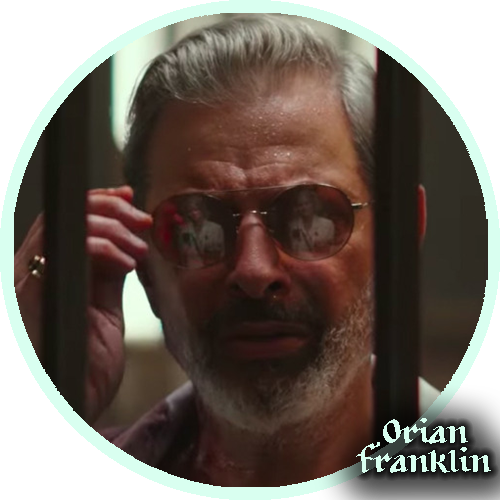
Now, Hotel Artemis, not a great movie. The plot is very lacking, the characters mostly cardboard archetypes instead of developed individuals... I think the film has a lot of issues with telling the audience the stuff that could be shown much more artfully, but like, egh.
Despite those issues, Orian Franklin - Niagara - is a very interesting character. He’s in the movie for a very short amount of time (barely twenty-five minutes of screentime, if that) but he’s a really interesting enigma, and I really loved what little they bothered to do with him.
He’s one of those characters that’s much more interesting in fanfic than in the canon.
#as defined by dictionary#jeff goldblum#jgcu#dictionary writes#this is very much under construction lol
55 notes
·
View notes
Link
Subjectivity describes “the condition of being a person”, how this is experienced as well as the “processes by which we become a person” (Barker 2012, p.220). Subjectivity and identity appear to be linked to the environment and to particular assumptions, socio-economic inequalities and a person’s own experience of themselves. Greek theatre as a cultural construct, shaped Western civilisation through traditions of storytelling, created through religious and social practices which impacted on the kinds of characters portrayed on stage, providing background, history and context, a story of self – that is situated, yet partakes in its own active process of identity.
References:
An Introduction to Greek Theatre, 11 January 2013 National Gallery UK. Available at https://www.youtube.com/watch?v=aSRLK7SogvE, viewed 15 March 2019.
Arthive, image,“Perseus saves Andromeda (Piero di Cosimo)”, https://arthive.com/artists/852~Piero_di_Cosimo/works/373823~Perseus_saves_Andromeda viewed 15 March 2019.
Barker, C, 2012, ‘Issues of subjectivity and identity’, Cultural studies: theory and practice, 4th edn, Sage, London, pp. 219-251.
Barker, C, 2004, The SAGE dictionary of cultural studies. Sage, London.
History of Masks, 2019, History of Masks -Ancient Greek Theatre Masks, viewed 15 March 2019, http://www.historyofmasks.net/famous-masks/greek-masks/.
Mansfield, N, 2000, Subjectivity: Theories of the self from Freud to Haraway, Allen & Unwin, Australia.
Jenkins, R, 1996. ‘Theorising social identity’, Social Identity, Routledge, London.
Oedipus Rex/Preview of Actors’ Theatre Production, 11 August 2011 Nick Baldasare. Available at https://www.youtube.com/watch?v=5uBOy6QSvbM viewed 15 March 2019
Secret of the vine, image. “Minotaur” https://www.secretofthevine.com/minotaur , viewed 15 March 2019
The ancient origins of the Olympics -Armand D’Angour, 3 September 2015, TED-ED. Available at https://www.youtube.com/watch?v=VdHHus8IgYA viewed 15 March 2019
The Thinking Muse, image “Apollo and the Muses (Baldassarre Peruzzi)” http://thinkingmuse.com/9-muses/ viewed 20 March 2019
Valerie, S, 2016. ‘The Causa Corpora’, Actors and the art of performance: Under exposure, Palgrave Macmillan, UK.
Vincent, L.C. & Goncalo, J. A. (2014) ‘License to Steal: How the Creative Identity Entitles Dishonesty’, The ethics of creativity, Moran, S. Cropley, and D. Kaufman, C. J. (eds). pp.137-151 Palgrave Macmillan: UK
Wikimedia, image, “Portrait of the Poet Homer” https://upload.wikimedia.org/wikipedia/commons/0/06/Dutch_-_Portrait_of_the_Poet_Homer_-_Walters_37646.jpg viewed 17 March 2019.
Wikipedia, image, “Echo and Narcissus (John William Waterhouse)”, https://en.wikipedia.org/wiki/Echo_and_Narcissus#/media/File:John_William_Waterhouse_-_Echo_and_Narcissus_-_Google_Art_Project.jpg viewed 17 March 2019
Wikipedia, image “Roman mosaic Odysseus” https://en.wikipedia.org/wiki/Odyssey#/media/File:Mosa%C3%AFque_d%27Ulysse_et_les_sir%C3%A8nes.jpg viewed 20 March 2019.
Wikipedia, image “Tragic Comic Masks Hadrian’s Villa mosaic”, https://en.wikipedia.org/wiki/Theatre_of_ancient_Greece#/media/File:Tragic_comic_masks_-_roman_mosaic.jpg viewed 20 March 2019.
1 note
·
View note
Text
CENTO FOR THE NIGHT I SAID “I LOVE YOU”
Today, gentle reader,
is as good a place to start.
But you knew that, didn’t you? Then let us
give ourselves over to the noise
of a great scheme that included everything.
That indicts everything.
Let us roam the night together
in an attempt to catch the stars that drop.
•••
White clouds against sky
come humming toward me.
One closely resembling the beginning
of a miracle. There’s
the moonlight on a curved path
lighting the purple flowers of fragrant June.
I dreamed him and there he was
silent as destiny,
lit by a momentary match.
•••
Men are so clueless sometimes,
like startled fish
living just to live.
We are dying quickly
but behave as good guests should:
patiently allowing the night
to have the last word.
And I just don’t know,
you know? I never had a whole lot to say
while talking to strange men.
•••
What allows some strangers to go past strangeness? Exchanging
yearning for permanence. And who wouldn’t
come back to bed? Love—
How free we are; how bound. Put here in love’s name:
called John. A name so common as
a name sung quietly from somewhere.
Like a cry abandoned someplace
in a city about which I know.
•••
Like black birds pushing against glass,
I didn’t hold myself back. I gave in completely and went
all the way to the vague influence of the distant stars.
I saw something like an angel
spread across the horizon like some dreadful prophecy
refusing to be contained, to accept limits.
She said, “Are you sure you know what you’re doing?”
•••
I love you, I say, desperate
to admit that
the flesh extends its vanity
to an unknown land
where all the wild swarm.
This is not death. It is something safer,
almost made of air—
I think they call it god.
•••
Some say we’re lucky to be alive, to have
a sky that stays there. Above.
And I suppose I would have to agree…
but the hell with that.
It isn’t ordinary. The way the world unravels,
from a distance, can look like pain
eager as penned-in horses.
•••
And it came to pass that meaning faltered, came detached.
I learned my name was not my name.
I was not myself. Myself
resembles something else
that had nothing to do with me, except
I am again the child with too many questions
as old as light. I am always learning the same thing:
one day all this will only be memory.
One day soon. For no good reason.
•••
Dying is simple—
the body relaxes inside
hysterical light
as someone drafts an elegy
in a body too much alive.
Love is like this;
not a heartbeat, but a moan.
•••
Can you see me
sinking out of sight
in the middle of our life?
Should I be ashamed of myself
for something I didn’t know I—
(He walks by. He walks by
laughing at me.)
“What else did you expect
from this day forward?” For better. Or worse.
•••
One life is not enough
to remember all the things
marriage is. This town at dawn
can will away my lust
to suck honey from the sunlight,
so why am I out here trying
to make men tremble who never weep?
•••
After all’s said and after all’s done
and all arrogance dismissed,
the distance rumbles in
sparing only stars.
The moon, like a flower,
survives as opinion
making it almost transparent.
The pieces of heavy sky
heavy as sleep.
I close my eyes
and this is my life now.
NICOLE SEALEY
** “Cento for the Night I Said, ‘I Love You’” is comprised entirely of lines borrowed from the following poets (in order of appearance): C.D. Wright, Mary Jo Salter, Patricia Smith, Toi Derricotte, Philip Levine, Lynda Hull, Langston Hughes, Malachi Black, Kimberly Blaeser, Maxine Kumine, Afaa Michael Weaver, Hédi Kaddour, dg nanouk okpik, Claude McKay, Deborah Landau, Sharkmeat Blue, George Bradley, Yona Harvey, Federico García Lorca, June Jordan, Kwame Dawes, W.H. Auden, Ana Castillo, Erica Hunt, Muriel Rukeyser, Ed Roberson, Ruth Madievsky, Thylias Moss, Gregory Orr, Yusef Komunyakaa, Elizabeth Spires, Lyrae Van Clief-Stefanon, Tim Seibles, Nathalie Handal, Wisława Szymborska, Lucille Clifton, C.P. Cavafy, Rainer Maria Rilke, Raúl Zurita, August Kleinzahler, Louise Glück, Victoria Redel, Adélia Prado, Sonia Sanchez, Jean Sénac, Claribel Alegría, Remica L. Bingham-Risher, Sylvia Plath, Harryette Mullen, Emily Dickinson, Sharon Strange, Larry Levis, Sherman Alexie, Franz Wright, Marianne Boruch, Andrea Cohen, Linda Susan Jackson, Carl Phillips, Robert Hayden, Eavan Boland, Anne Waldman, Dorianne Laux, Natasha Trethewey, Eric Gamalinda, Galway Kinnell, John Murillo, Yves Bonnefoy, Tina Chang, David Wojahn, Nick Laird, Simone White, Catherine Barnett, Vladimir Mayakovsky, Brenda Shaughnessy, Kazim Ali, Brenda Hillman, Valzhyna Mort, Blas Falconer, Theodore Roethke, Kahlil Gibran, Rita Dove, Brigit Pegeen Kelly, Khaled Mattawa, Tracy K. Smith, Ed Skoog, Alice Walker, Pablo Neruda, Adrienne Rich, Percy Bysshe Shelley, Edna St. Vincent Millay, Aimé Césaire, Jake Adam York, Bob Kaufman, William Blake, Frank Bidart, Marilyn Nelson, Polina Barskova, Santee Frazier, Suheir Hammad and Cornelius Eady.
57 notes
·
View notes
Text
Hyperallergic: No Point of View Is the Best View of All: Artists Working Between 1952–65, Many of Whom Are Forgotten
Jean Follett, “3 Black Bottles” (1958), mixed media on wood, 11 2/3 x 19 1/2 x 1 3/4 inches, The American College of Greece Art Collection, Athens, gift of Takis Efstathiou Photo: Nicholas Papananias
Once upon a time, the art world — at least as it existed in downtown New York in the 1950s — was diverse in myriad ways. I mean, when is the last time you went to a big group show and came across a gaggle of Asian sounding names: Yayoi Kusama, Leo Valledor, Yoko Ono, Nanae Momiyama, Robert Kobayashi, Walasse Ting, and Tadaaki Kuwayama. How many Asians were included in The Forever Now: Contemporary Painting in an Atemporal World, which was at the Museum of Modern Art in New York (December 14, 2014–April 5, 2015)? What happened between the mid-1960s and the present, a little more than a half-century? Did Asians stop painting and go into computer programming? Hollywood erases Asians faster than you can say anime, and so does the art world, it seems.
These are just some of the questions spurred by the exhibition, Inventing Downtown: Artist-Run Galleries in New York City, 1952-1965 at the Grey Art Gallery, New York University (January 10–April 1, 2017), which was curated by Melissa Rachleff, who has done an amazing and thorough job.
Rachleff deserves our thanks for amassing a wide and wild range of material, from art works to documentary photographs to gallery ephemera. She has managed to allot discrete areas to a variety of artist-run galleries and groups in what is a difficult space to organize. Rachleff seems to have left no stone unturned. Driven by curiosity, this is curatorial practice at its best.
For anyone who has come across the name Jean Follett, you can see two wall pieces by her in this exhibition, one of which is in a little-known collection in Athens, Greece. Follet, who studied with Hans Hoffman, began applying layers of paint to found objects placed in a shallow box, to which she added more objects. They are shadow boxes but they are not. They don’t look like anything else. They are hybrid works, but that term does not touch upon the strangeness of Follet’s art.
Follet was included in three shows at the Museum of Modern Art between 1959 and 1963, including The Art of Assemblage (October 4 – November 12, 1961), organized by William C Seitz. That catalog was the first place I saw her work, along with a number of other artists, including Bruce Conner, Jess, and Robert Mallary, alongside Lee Bontecou, Joseph Cornell, Marcel Duchamp, Jasper Johns, Marisol, and Robert Rauschenberg. That kind of openness to different aesthetic positions does not happen anymore.
I don’t know what happened to Follet, but I have long been curious about her work, and was more than happy to see it. Forty years ago, Thomas B. Hess mentioned her in passing in a review of the painter David Budd that appeared in New York Magazine (March 7, 1977). Here is the kicker line from that review:
Some lost their way. Where are Jean Follet and Felix Pasilis? A few died before their time (Gabe Kohn, Sam Goodman, Gandy Brodie). Most have persevered, however, in lives of not quite quiet desperation. They teach a bit, exhibit now and then, while slowly piecing together the historical puzzle that was scattered so brusquely about fifteen years ago, when it seemed, as if on a Monday, they were respected members of a cultural milieu and then, the next Friday, practically the whole art Establishment crossed the street to avoid having to say hello.
Hale Woodru, “Blue Intrusion” (1958), oil on canvas, 70 x 40 inches, Grey Art Gallery, New York University Art Collection, anonymous gift, 1958.35. Art (© Estate of Hale Woodru /Licensed by VAGA, New York, NY)
Hess writes that this sweeping change took place around 1962. All the artists he mentions have work in the NYU exhibition. I would venture that most are hardly known and the probability is high that none of them have something currently on display in a New York museum.
If 1962 is the dividing line between one art world and what we seem to have inherited — the moneyed domain of the big, slick, well-produced, and shiny, not to mention the big, industrial, and tastefully rusted — Inventing Downtown will bring you back to the period before the “art Establishment crossed the street.” It is before the art world became arty.
Between 1952 and ’65, the years covered by the exhibition, every kind of scene seemed to be percolating in a rather small geographic area of Manhattan. The epicenter was East Tenth Street, where a bunch of artist-run galleries opened and Willem de Kooning had a studio. Ratleff smartly organizes the shows around artist-run galleries, alternative spaces, and groups. Some were short-lived. Spiral, a collective of African-American artists who met in Romare Bearden’s loft on Canal Street, was active from the summer of 1963 until 1965, and had one exhibition. They were trying to negotiate their relationship to race, Civil Rights, and aesthetics. It could not have been easy. Ratleff also includes the Green Gallery, whose “program,” according to the free brochure accompanying the exhibition, “resulted in the narrowing of aesthetic possibilities and the marginalization of many artists.” If she left any gallery or alternative scene out, I am unaware of it.
In addition to Follet, there were many artists whose work I hadn’t seen before. There were also many surprises from familiar artists, including a garish, Bonnard-inspired “Portrait of Frank O’Hara” (1953-54) by Wolf Kahn. It looks as if the poet is wearing a pink and orange Halloween mask. A few feet away, on the same wall, is a lovely “Portrait of Jane Freilicher” (1957) — a close friend of O’Hara’s — by Jane Wilson. We know the portraits of O’Hara done by Larry Rivers, Fairfield Porter, and Alice Neel, but this one was new to me.
There are also early works by Jim Dine, Dan Flavin, and Allan Kaprow before they became famous for making signature works. Flavin’s piece “Apollinaire wounded (to Ward Jackson)” (1959), is made from a crushed can surrounded by oil paint and pencil on Masonite, mounted on plaster on pine in a shallow box. The title is carefully incised into the paint in the upper left corner, while the red hole at the top of the crushed can refers to the poet’s head wound, which he got in World War I.
Dan Flavin, “Apollinaire wounded (to Ward Jackson)” (1959–1960), crushed can, oil, and pencil on Masonite, and plaster on pine, 13 1/2 x 19 3/8 x 7/8 inches, collection of Stephen Flavin (© 2016 Stephen Flavin/ Artists Rights Society (ARS), New York)
There are abstract paintings by the African-American artists Norman Lewis, Hale Woodruff, and Ed Clark, which tell us that the legacy of the 1960s is one of exclusion. That this exclusion began during the Civil Rights movement does not speak well of the art world.
The other thing that struck me is the diversity of the work. There is no hierarchy between figurative and abstract paintings, nor are there distinctions about materials or processes. The thickly painted “Heaven and Earth” (1960) by Alfred Jensen is diagonally opposite the thinly painted “Ada Ada” (1959) by Alex Katz. The former is filled with arcane symbols, while the latter depicts the artist’s wife twice, wearing a plain blue dress and matching blue shoes. While Hess never says what led up to the sea change in 1962, one cause seems to have been the advent of hierarchical thinking. So you have Donald Judd writing in his essay “Specific Objects” (1965):
The main thing wrong with painting is that it is a rectangular plane placed flat against the wall.
And while this might have influenced the thinking of a lot of people, it does not mean he is right: it means that he has a forceful viewpoint powerfully expressed in unequivocal terms. But you can also find the paintings of John Wesley at the Judd Foundation in Marfa, Texas, and so maybe he was not as much of an ideologue as some people want to believe and take comfort in, because it makes looking easier when you know what to look at. Then there is Clement Greenberg’s snobbish term, “Tenth Street Touch,” which dismissed a lot of artists, including many who did not use a loaded brush or paint the figure. There is the much-ballyhooed claim that art had to be objective, abstract, pure, and even universal — all of which are questionable standards. I think collectors also had something to do with what happened. Whatever the collectors Robert and Ethel Scull did for the art world, they were self-serving narcissists, as Andy Warhol’s portrait “Ethel Scull 36 Times” (1963) demonstrates. And, of course, there’s commerce, from rising rents to the escalating prices of what looks good on a big, immaculate wall — the “post-easel” picture. These forces together helped produce the perfect storm. In some sense, the art world turned from a place of community to a place of authority.
Wolf Kahn, “Frank O’Hara” (1953‒1954), oil on canvas, 43 x 41 inches (courtesy the artist)
By bringing us back to the decade before the “art Establishment” decided what were the true, quantifiable markers of progress, Inventing Downtown reminds us that what we have now was not always the way it was. There are so many things to see and discover — from photographs of interactive paintings by Yoko Ono (Oscar Murillo, eat your heart out), to George Sugarman’s ‘Four Forms in Walnut” from 1959 (yes, you can carve wood and not be old-fashioned), to a strange and interesting “Self-Portrait in Fur Jacket” (1959) by Marcia Marcus (what happened to her?), to a group of gritty drawings by Emilio Cruz, Red Grooms, and Bob Thompson. Check out the work of Boris Lurie, who was in a concentration camp (1941-45), and then read about him and Sam Goodman and the NO! art movement in The Outlaw Bible of American Art (2015), edited by Alan Kaufman. This exhibition brings back a lot of what has been forgotten, overlooked, and thrown under the bus — no doubt with glee. It might not all be good but, to quote another statement that Judd made in “Specific Objects:”
A work needs only to be interesting.
By that standard, everything in this exhibition needed to be in this exhibition. The best thing you can do for yourself is go more than once. Buy the catalogue. Read the brochure while walking around both floors of the exhibition. Open your eyes and mind. Don’t miss the Lois Dodd painting of three cows hanging on the wall above the receptionist. I almost did.
Inventing Downtown: Artist-Run Galleries in New York City, 1952-1965 continues at the Grey Art Gallery, New York University (100 Washington Square East, Greenwich Village, Manhattan) through April 1.
The post No Point of View Is the Best View of All: Artists Working Between 1952–65, Many of Whom Are Forgotten appeared first on Hyperallergic.
from Hyperallergic http://ift.tt/2jl0mD5 via IFTTT
1 note
·
View note
Text
James Franco’s The Disaster Artist: Hollywood Caught In The Act Of Kissing Its Own Ass
youtube
Greg Sestero’s now reasonably famous book The Disaster Artist, co-written by Tom Bissell, is much better than Producer/Director/Star James Franco’s quite famous movie The Disaster Artist, each telling the story of the making of Tommy Wiseau's all-conquering cult classic, The Room. Book beats film! Book beats film! Book beats film!
Well, not necessarily, but the supposedly non-commercial Franco1 has taken a remarkable piece of material, the only in La La Land partnership of Tommy and Greg (played by James Franco and his brother Dave), and turned it into an unremarkable piece of Hollywood schmaltz, though it’s still pretty funny. Because anyone who could make an unfunny film about Tommy Wiseau would be—okay, I’ll go for it—would be less talented than Tommy Wiseau.
For Hollywood winners like Franco—and virtually anyone else who’s really “in the business”—both Sestero and Wiseau are “touching”—or would be touching if The Room had never reached the screen and, almost as important, if The Disaster Artist had never been written. If these things had not happened, Greg and Tommy would have stumbled through Hollywood like a latter-day George and Lennie2, so not getting it—Tommy the gigantic, misunderstood genius whose problem is that everyone does understand him, understands that he has utterly no talent, and Greg the buff, vacuous pretty boy whose career peaks when he gets the lead in Retro Puppet Master—shot in Romania, direct to video and seventh in the series—an actor so bad and so unknown that he can’t even be used as a punchline. “Gary Busey called. He wants his je ne sais quoi back”? Funny! “Greg Sestero called. He wants his je ne sais quoi back”? Say what?
No one of any importance would have known either man, but they all would have known “a Tommy Wiseau”, “a Greg Sestero,” that pathetic kid in acting class who would never shut up, who woke up every morning thinking “next year I’ll be a star!”, who never realized how achingly terrible he was, how utterly unsuited for the Hollywood shark tank, who never got eaten because he was never worth the eating.
Franco’s film gets about half of that, in particular when we see Tommy and Greg genuflecting at the scene of James Dean’s death. Dean is their Christ. He suffered for them! He died for them! Through His death they are transfigured! They must suffer as He did, and if they do, if they suffer as Christ, they will become as Christ, or rather, as James Dean. They will become stars! They will move others as He moved them! But only if they are worthy! Only if they dedicate their lives to the holy craft of acting!3
And so they did, and so The Room did get made, thanks both to Wiseau’s bizarrely bottomless bank account and his bizarrely bottomless ambition to make a film—the story of an utterly good man surrounded by betrayers and ultimately crucified by them4—which overcame even his almost bottomless ability to sabotage every aspect of his life, constantly driving people away with his naïve, unrestrained egotism but pulling them back in with his naïve, unrestrained neediness—and his naïve, unrestrained bank account.5
As I say, Franco gets about half of this, but he constantly interlards it with self-congratulatory Hollywood schmaltz. There’s an utterly gratuitous bit when one of the actresses asks the old lady playing Lisa’s mother why she gets up at five in the morning and drives across town so that she can spend hours waiting for Tommy to show up. “Because the worst day on a movie set is better than the best day not on a movie set,” she says, and everyone sighs in agreement. We’re making a movie! We’re in heaven! We are the stuff that dreams are made of! We are our dreams!6
It gets worse, naturally, at the premiere of The Room. In “real life,” as Franco tells us via text, The Room cleared $1800 over a showing that lasted two weeks (Tommy paid to keep the film in the theater for two weeks so that it would qualify for the Academy Awards), which means an average audience of about 50 a day, though Tommy paid for a full house for the premiere.
Rather remarkably, Sestero doesn’t tell us how the premiere went, but Franco isn’t so shy. He shows us the crowd roaring in delight at the film's badness, though in real life, since they had been paid to be there, one can wonder if that’s what happened. But Franco isn’t interested in what happened in real life. He’s channeling Hollywood’s vision of itself—as shown, for example, in Sullivan’s Travels, Preston Surges’ tongue in cheek take on the “genius” Hollywood director who wants to “make a statement” only to discover, while watching a rapt audience dissolve into happiness while watching a “Pluto” cartoon, that what counts is helping people forget their troubles. We make people happy, gosh darn it! And that’s pretty gosh darn good thing to do!7
Of course, Tommy’s not pleased to see the crowd laughing at his own crucifixion—that’s me up there on the cross, goddamn it!—but Greg rather remarkably, and unconvincingly, talks him down. They love it, Tommy! They love your film! You’re a star now, big boy, and everybody knows it! So go out there and enjoy it! And so, of course, the film ends with a delighted Tommy standing up there and proudly acknowledging the crowd’s standing ovation.8
The conclusion of The Disaster Artist is reminiscent of that of several other biopics of show biz outsiders, Tim Burton’s Ed Wood and Miloš Forman’s tribute to Andy Kaufman, Man on the Moon. Ed Wood, of course, is long dead, and so are the people who knew him. Tommy Wiseau, and his friends, are all very much alive. But Andy was dead when Man on the Moon was made, while those who knew him were living. Andy, unlike both Ed and Tommy, was talented—his early reading of The Great Gatsby was one of the greatest bits I’ve ever seen—but everyone who knew him, it seems, hated him. Yeah, Hollywood loves its oddballs. But, you know, Hollywood oddballs are like everything else in Hollywood. Don’t look too close.
Afterwords Woody Allen, not often accused of sentimentality, except about himself, pays tribute, in Broadway Danny Rose, to show biz losers, those sweetly but completely untalented misfits he met on the way up. Much of BDR is very funny, but Woody naturally has to “explain” to us at the end that all women are lying, betraying sluts—um, sort of like the message of The Room. Rent BDR and stop watching about ten minutes from the end. You’ll enjoy it much more.
See the movies, read the book Half the fun of The Disaster Artist is the lovingly recreated bad scenes from The Room, so why not just cut to the chase and see The Room itself? Also, read the book! Sestero may look like an original cast member of The Real Poolboys of Beverly Hills, but his book gives a remarkable portrait of a man whose longing to express his passion was at once utterly false and utterly real, a real-life Don Quixote who drew Greg's Sancho Panza along in a mixture of both admiration and pity.9 There's so much in the book that it should have been a mini-series, six to ten hours, to allow audiences to really marinate in Tommy's manifold weirdnesses, though, of course, the real story of Tommy's weirdnesses would not always be funny. As Sestero tells it, for both Greg and Tommy, the "key" film for interpreting Tommy's life is not Rebel Without A Cause but Anthony Minghella's 1999 adaptation of Patricia Highsmith's ode to a homicidal shape-shifter, The Talented Mr. Riply.
Franco has directed short films and presented a variety of multimedia projects, including “Collage”, featuring live dance, theater, music, and poetry. He directed a 90-minute documentary on the early 20th-century American poet Hart Crane, which I haven’t seen. He’s published a book of short stories, has exhibited “installations” at art museums, has done just about anything and everything guaranteed not to turn a buck. ↩︎
Dunno if kids still have to read Of Mice and Men. Wiseau is an interesting combination of George and Lennie, both monster and mastermind. Fortunately, Greg never had to blow Tommy's brains out. ↩︎
The “center” of The Room comes when Johnny/Tommy cries out “You’re tearing me apart!” in explicit homage to Dean in Rebel Without A Cause. ↩︎
Tommy’s arms outstretched death scene is clearly intended as such, though Franco doesn’t emphasize it. ↩︎
Particularly touching is Sestero’s description of the famous rooftop scene that Tommy keeps bungling over and over again. He reaches out desperately to Greg for support. His whole life has been leading up to this point! If he can’t nail this scene, if were better he had never been born! Miraculously (as Sestero tells it), Greg saves him! “Thanks, man! I owe you! [beat] Your check bounced? You think I’m Santa Claus? Hey, bro! Go fuck a reindeer!” [Laughs] ↩︎
Anyone who’s read “the making of” accounts of classic films, ranging from The Texas Chainsaw Massacre (unpaid cast and crew sweating through 14-hour days in the Texas sun while the one actress with tits sits in an air-conditioned limo) to Apocalypse Now (unpaid extras and crew starving amidst filth while enduring tropical monsoons) can doubt this. A lot of people got fired by Tommy and one can wonder if they ever got paid. Of course, anyone connected with a “classic shoot” will want to tell stories, but are the stories true? Truth in Hollywood? Say what? ↩︎
Other nits I'd like to pick: Franco's use of stirring, "Chariots of Fire" music whenever Greg and Tommy talk about their dreams. You don't have to tell us they're talking about their dreams, Jim! We can hear the dialogue! Also, some "star" perogatives: In the book, it's Greg who suggests driving to the site of James Dean's fatal crash. In the movie, it's Tommy. Also, Tommy does all the driving, though in the book it's almost always Greg at the wheel, with Tommy, a handkerchief over his face, zonked out in the passenger seat. ↩︎
Lots of films show the leads receiving a standing ovation. I’ve never believed in any of them. ↩︎
However irrational it is—and Greg can see how irrational it is—Tommy's boundless self-confidence always energizes Greg. Hey, maybe I can make it after all! And when Tommy's self-confidence flags, Greg panics. Say it ain't so, Tommy! Say it ain't so! ↩︎
0 notes
Text
Critic's Notebook: Sam Shepard, Voice of the American West
http://styleveryday.com/2017/08/02/critics-notebook-sam-shepard-voice-of-the-american-west/
Critic's Notebook: Sam Shepard, Voice of the American West
The Pulitzer-winning playwright of ‘Buried Child’ and ‘Fool for Love’ forged an indelible legacy as a chronicler of broken dreams and fractured families in the ravaged wasteland that was once the American frontier.
More than one tribute honoring Sam Shepard, the influential American playwright and actor who died at his Kentucky home on Thursday at 73, has pointed to the iconic image of his rangy figure clad in a bomber jacket, ambling away unfazed from a near-fatal crash in his Oscar-nominated role as test pilot Chuck Yeager in Philip Kaufman’s 1983 film The Right Stuff.
Shepard’s loose cowboy swagger, his easy masculinity and his rejection of conventional heroism were stamped all over that memorable performance, along with his laconic heartland manner and piercing directness.
But for me, the film role most emblematic of this taciturn neo-Gary Cooper was his first major screen appearance, as the wealthy Texas Panhandle farmer drawn into a deadly romantic triangle in Terrence Malick’s haunting 1978 evocation of early 20th-century American life, Days of Heaven. In that film, Shepard’s unnamed character confronts his mortality while falling in love with an itinerant worker. He then watches with gimlet-eyed intensity as the deceit behind their marriage is exposed, his anger given cataclysmic weight by the operatic forces of plague and fire that destroy his crops.
While the celebrated visuals of that film evoke the painters Andrew Wyeth and Edward Hopper, its magic-hour shots of Shepard amid sprawling wheat fields — a solitary figure with an unforgiving gaze — could just as well be lifted from the playwright’s own singular body of work.
No other dramatist before or since has crafted such distinctive, richly textured contemplations of the American West, or of the broken dreams and fractured families that have littered its devolution. The landscape that will endure in Shepard’s greatest plays is a desolate prairie of the mind, a dark place of bitter betrayals, corrosive lies and scalding disillusionments, captured in language that ranged from off-kilter naturalism to surreal lyricism and caustic black humor, and in action notable for its frequent eruptions of bruising physicality.
Shepard’s most lacerating portrait of the breakdown in family values, and, in particular, the illusory authority of the traditional patriarch, was perhaps his 1979 Pulitzer Prize winner Buried Child, which was recently revived in New York and London with Ed Harris and Amy Madigan.
But family, and the irreconcilable frictions and abuses, the disloyalties and rivalries that feed its dysfunction, was a core theme in many of his best-known works of the 1970s and ’80s, among them Curse of the Starving Class, True West, Fool for Love and the under-appreciated, messy masterpiece A Lie of the Mind.
Last seen in New York in a searing 2010 production directed by Ethan Hawke, that 1985 drama about two irrevocably damaged Montana families was the culmination of a defining thematic exploration and arguably its most powerful expression. No American playwright since Eugene O’Neill had so mercilessly stripped away the consoling notions of familial and romantic love and security to reveal the festering resentments beneath those false comforts.
In Shepard’s work, rootless sons are fated to become the fathers they hate; siblings are divided, often indistinguishably, into good and irredeemable selves; women feed on their victimhood while clinging to the false salvation of their marriages; and helpless, hopeless old men refuse to die. The seeds of that focus could be traced to Shepard’s personal history, to his conflicted relationship with his father, a former bomber pilot who became a chronic drinker.
Echoes of that overarching theme run through his finest work as a screenwriter, too, on Wim Wenders’ 1984 road movie, Paris, Texas, which Shepard co-wrote with L.M. Kit Carson. Harry Dean Stanton, in a key career role, played an amnesiac drifting in from the desert to reconnect with his brother and his seven-year-old son, eventually embarking on a journey with the boy to find his missing mother. The seamless blend of physical and psychological terrain, as well as the contradictory expansiveness and bleakness of the American landscape, are classic Shepard.
That this rancher poet who emerged out of the off-off-Broadway theater scene of the 1960s (one of his early experimental plays was Cowboy Mouth, written with then-girlfriend Patti Smith) should also have become a reluctant movie star was perhaps the ultimate irony of Shepard’s long and prolific career.
“There are places where writing is acting and acting is writing,” Shepard once said. “I’m not so interested in the divisions. I’m interested in the way things cross over.”
Those blurred boundaries between persona and performance, role and reality, are part of what made Shepard such a compelling presence onscreen — even though his every appearance was so understated it seemed almost antithetical to what we consider great acting. His face always told a story, even more so in his later, craggier years.
His single scene as the suicidal alcoholic poet in the otherwise patchy 2013 screen version of Tracy Letts’ great play, August: Osage County, was the film’s one moment of lingering emotional impact — far more arresting than all the showy histrionics of Meryl Streep and Julia Roberts combined.
Several directors in recent years have harnessed Shepard’s subdued charisma, his unforced gravitas and the weathered roadmap of life experience etched across his face to strong effect. Among them are Ridley Scott in Black Hawk Down, Andrew Dominik in The Assassination of Jesse James by the Coward Robert Ford, Jim Mickle in Cold in July and Jeff Nichols in Mud and Midnight Special. And how fitting that one of his final roles was as the flawed patriarch in Netflix’s Bloodline, playing opposite Sissy Spacek as a couple who seemed carved out of the vintage Americana mold.
Shepard’s writing and performances will live on as reminders of a lost frontier, and of a uniquely American family portrait enriched by the eternal warring coexistence of darkness and light.
0 notes